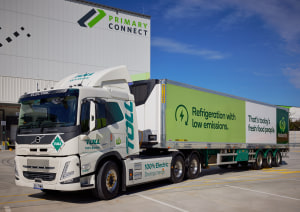Coca-Cola is set to prototype a paper bottle as part of its ambition to reduce the use of plastics from its packaging, though questions have been raised on the viability of its latest plan, with many considering it a misstep in its otherwise positive move towards greater sustainability.
Not much detail about the Coca-Cola paper prototype is available, although we do know it was developed by Danish company Paboco, which was given the brief to create a recyclable, plastic-free structure capable of withstanding the forces exerted by fizzy drinks, which are bottled under pressure.
The barrier also has to ensure no fibres flake off into the liquid, as that would pose a risk of altering the taste of the drink – or potentially fall foul of health and safety checks. On top of that, the paper needs to be mouldable to create distinct bottle shapes and sizes for different brands, while being able to accept ink for printing their labels.

Sounds like a tough proposition, and indeed it is, with some questioning the feasibility of Coca-Cola’s proposal. The paucity of information on what the paper bottles are made of has also added to the uncertainty.
All we know is that they are “formed out of a single piece of paper-fibre-based materials to give them strength”, but that the shell “still contains a thin plastic liner.
“When they made the announcement, it was a fairly bold announcement without much detail – they basically just said here is our new paper bottle, but it is quite clear from the image and the construction that it is not just 100 per cent paper-based,” says Professor Edward Kosior, CEO and founder, Nextek.
“It’s obviously a composite bottle – it has a plastic liner, it has a plastic neck, it has a plastic cap, which means that the bottle will have significant complexity when it comes to recycling.
“If you wanted to break all of the rules of recycling, then you would design a bottle like that, and that is what this bottle does, and immediately tells me this is a marketing exercise.”
John Shipley, business unit director, KM Packaging, agrees with Kosior’s sentiment, saying: “From what I’ve seen, it looks like green washing. I would like to see a lifecycle assessment for this pack versus PET, rPET, Tetra Pak and glass bottles, and see how they compare.”

“Coca-Cola is already making commitments to use recycled PET bottles, which I think is a better plan – PET can be recycled successfully back into packaging, it’s lightweight, resource efficient and requires less energy and water to produce and recycle compared to alternatives. This should result in lower carbon emissions," Shipley says.
“My main concern is when initiatives are presented to the consumer as more sustainable and backing that up with facts. Rigid PET is already collected kerbside in many countries including Australia and successfully recycled into food trays and bottles.
“We all have a responsibility to educate the consumer, whether you are from the packaging industry, the media, brand owners or retailers. All plastics have residual value, and we should focus efforts to educate consumers and provide the infrastructure to capture and recycle more.”
According to Kosior, it is quite clear that this is not a ‘circular economy’ bottle, and instead would require a new category to be invented if it is to be a replacement for the currently recyclable materials, such as PET, aluminium or glass, which he finds unfortunate.
“Coca-Cola is already very progressive in their use of recycled PET and very good packaging designs for recyclability, so it is odd that they come out with a design that has no apparent end-of-life strategy,” Kosior adds.
“It breaks all of the rules of a circular economy packaging material, which is really the pathway that Coca-Cola have mapped out. All of their other packaging formats are getting quite good at recyclablility and they are all very well designed.”
“Globally they have made big commitments and they are one of the few companies that have actually made active moves to include recycled content. They are well ahead of all the other big brands in achieving their goals in this space," Kosior says.
“So you have to wonder, if they have made all of these positive moves in recycling, why would they announce a bottle like this, which is clearly not recycling, and instead would add to the waste stream.
“It flies in the face of what everyone has set globally, which is to recover and recycle. That is really where they should end up heading.”
The answer, as PKN realises, may well be that the plastic liner will be made from a biomaterial taht could go in the same recycling stream as paper, with similar intentions for the neck thread and closure. All will be revealed, no doubt, in due course.
This month, Coca-Cola has announced a range of 10 sustainability objectives in its 2020-2040 Sustainability Ambitions, which builds on the achievements of its 2020 Sustainability Goals.
The company will focus its action over the next 20 years on four priority areas – water, consumer well-being, packaging, and carbon reduction – to help deliver on its long-term Value Proposition centred around its customers, people, partners, consumers, and the environment.
For more details on Coca-Cola's sustainability ambitions in regards to its packaging, please click here.






